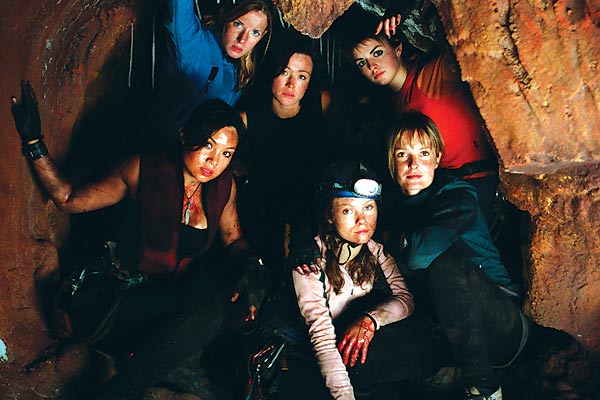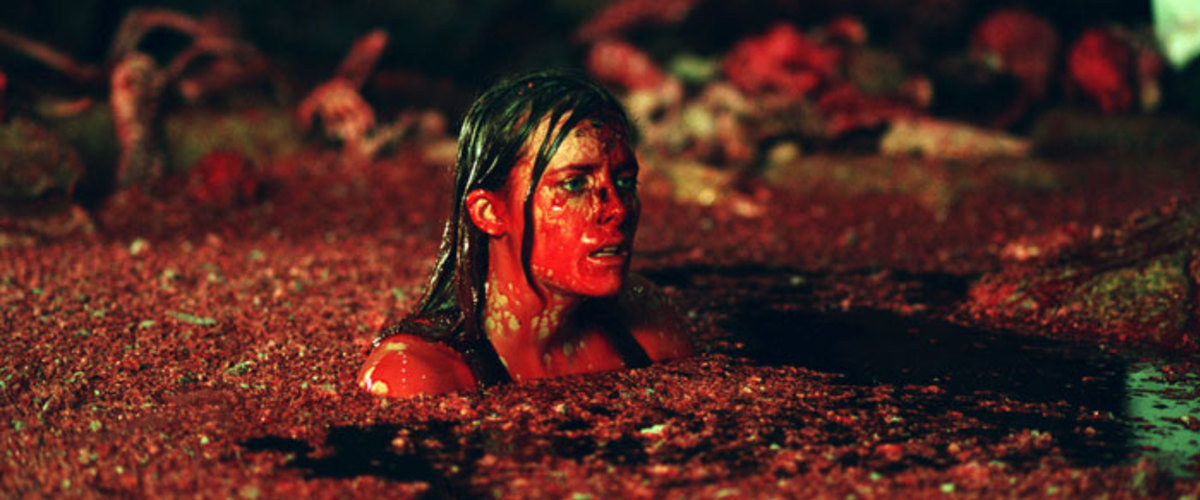The Fine Art of Horror - Five Lessons from The Descent
Horror is a genre of film that can sell, it's the highest grossing genre worldwide and easy to make on a low budget. The thing with horror is that as bad as it can be people will still watch it because it's great entertainment and audiences enjoy being scared.There is an art to making a good horror film though. It is easy to step over the line of gore or cheap thrills. I recently watched a horror film this weekend that inspired me to write this blog post.
Now, I cannot watch horror because I have a wild imagination and get scared out of my mind! I usually have to spoil the plot for myself then I can stand to watch it because I know what's coming. This film I let myself go on the ride and really enjoyed it, as scared as I was.
This blog post will study the film and be a plan for any aspiring horror writer, *warning spoilers*.
Key point of horror films/scripts: most scripts will have your ups and downs, triumphs and tragedies, the main thing in horror is that your script must always get worse for the characters.
"The Descent" (2005) is an older horror film by English Director/Writer Neil Marshall, and I think it is a fine specimen of horror that also breaks convention.
The first thing about this film is that it weaves a finer subplot into the relationships of the women that are being terrorized. We open with a close group of thrillseekers finishing a trip of white water rafting. Sarah (Shauna Macdonald) is our protagonist and we are shocked right away with a tragic freak accident where she loses her husband and young daughter.
One year later, she is reunited with her group of girlfriends, all strong women. Another bonus point for Marshall's script is that he went with an all female cast. This creates an interesting dynamic and a fresh perspective for horror films.

Sarah's best friend is Juno, played by Natalie Mendoza. Another bonus for Marshall is casting a woman of colour in one of the lead roles.
These women aren't your archetypes that you find in horror films, they are strong, smart and gutsy. Their reunion is an attempt to reconcile their friendship after the accident.
Lesson One: Strong, interesting characters with relationships - open the film with something shocking.
Cue the part where a group of friends drive out to a remote location to indulge in an adrenaline filled adventure, gone wrong. This is the plot for most horror films and as a writer or director it is up to you to twist the tale as much as you can.
In "The Descent" the women enter an unexplored cave system, their only entrance falls in on them. The film is scary already without any fantastic plots as the claustrophobia, darkness and hopelessness of being trapped in a cave system is so real it's frightening.
 |
| All female cast |
The women band together to get out of the cave system. My favourite part of Marshall's script is when the characters are all panicking about being stuck and Juno speaks up - "If we stay here we die." I loved that line as it just showed truth, there's no point in dallying around and freaking out. She is a smart character with strong will.
Now, they begin to explore the cave and come across a chasm. This is a great scene that audiences cannot take their eyes off of. We watch as the women light a flare and see the width they have to pass, we tense up as they drop a rock and await the sound of rock hitting bottom - and it's a long way down.
Lesson Three: Create suspense by putting your characters into a situation that they have to solve, make the audience watch on the edge of their seats and unravel the story through this scene.
One of the women starts to climb across the cavern, inserting anchor plates into the cavern and roping across so that everyone can get through. This is a masterful scene in teaching us suspense, each anchor plate inserted tenses us up - we know something has to go wrong, what Marshall does is makes us wait and wait for it. He also reveals plot when she finds an old anchor plate in the cavern ceiling and uses it - someone's been here before.
I would say we are a third way through act two and this is where it gets good. Marshall builds tension by creating realistic circumstances - the women start to panic, one runs off and breaks her leg! The situation has just gotten worse, now what do they do?
Along with this obstacle, Sarah has seen something. The audience is with her when she shines her flashlight in the cavern, a single light searching for the source of sound... where is it? She shines her light, we watch in anticipation - and then, it's revealed! A creepy humanoid figure (humorously reminiscent of Gollum in LOTR). Then it's gone.
Lesson Four: Use darkness to your advantage, use the audience's imagination to play.
The women are now faced with a mysterious clan of cannibalistic humanoids (known as Crawlers). They are attacked in the dark, throats ripped out. It is a bloodbath, everyone runs off, scattered.
My favourite scene in this movie is when the Crawlers attack the women: one of them is down on the ground about to be devoured and Juno steps in, they fight over her friend, a bloody tug-of-war. She takes out her pickaxe and kicks it's ass, stabbing it - and then more crawlers come.
 |
| Natalie Mendoza as Juno. |
This scene is amazing simply because the actress is faced with such an incredible circumstance and she does not give in. Her animal instinct comes out and she fights for her life.
Lesson Five: Give your audience a character to root for, a champion that the audience can't help but admire in the situation - but give them flaws.
From here the film gets incredibly bloody and intense. A fight scene using a night-vision camera is admirable.
I don't want to spoil the rest of the film because it is an excellent study in horror, so I will leave the post at Five Lessons plus the Golden Lesson:
GOLDEN LESSON: This film really sticks out because of the emotional depth the characters are given: a love affair, betrayal, loyalty, friendship. All things that every film should have, regardless of genre!
The Descent is available on Netflix Canada.
Subscribe to:
Post Comments
(
Atom
)


 I've always been a troublemaker, now I'm on my journey to being an independent filmmaker. I started out my film career as an actress but have discovered a voice and love of creating movies. What's a better job than making things from your imagination?
I've always been a troublemaker, now I'm on my journey to being an independent filmmaker. I started out my film career as an actress but have discovered a voice and love of creating movies. What's a better job than making things from your imagination?
No comments :
Post a Comment